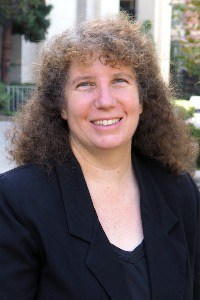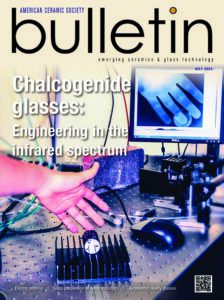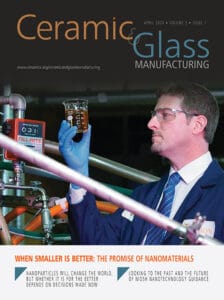 Sarah H. Tolbert is a professor in the Departments of Chemistry and Biochemistry and Materials Science and Engineering at University of California, Los Angeles, USA. Her research focuses on controlling nanometer-scale architecture in solution-processed nanomaterials to generate unique optical, electronic, magnetic, structural, and electrochemical properties. She has published over 200 scholarly research article and has 20 patents focusing on electrochemical energy storage (including both pseudocapacitors and batteries), organic electronics, nanomagnetics, nanoscale control of thermal conductivity, and new ultra-hard materials. She also serves as the faculty direct for a program aimed at bringing nano-concepts to schools, students, and the general public throughout the greater Los Angeles area.
Sarah H. Tolbert is a professor in the Departments of Chemistry and Biochemistry and Materials Science and Engineering at University of California, Los Angeles, USA. Her research focuses on controlling nanometer-scale architecture in solution-processed nanomaterials to generate unique optical, electronic, magnetic, structural, and electrochemical properties. She has published over 200 scholarly research article and has 20 patents focusing on electrochemical energy storage (including both pseudocapacitors and batteries), organic electronics, nanomagnetics, nanoscale control of thermal conductivity, and new ultra-hard materials. She also serves as the faculty direct for a program aimed at bringing nano-concepts to schools, students, and the general public throughout the greater Los Angeles area.
Professor Tolbert is the recipient of a number of awards; recent awards include Fellow of the Royal Society of Chemistry, the UCLA Diversity, Equity, and Inclusion Award, an NSF Special Creativity Award, and the American Chemical Society R.A. Glen Award. She directs the DOE Energy Frontier Research Center on Synthetic Control Across Length-scales for Advancing Rechargeables (SCALAR).
Title: Solution processed nanoporous and nanocrystal based magnetoelectric materials
Abstract: Here, we examine multiple ways to control magnetism in solution processed nanostructured materials using an applied bias. We begin with traditional strain coupled multiferroics, and consider two systems. The first is a nanoporous magnetic network produced using polymer templating of sol-gel oxides. The pores are then conformally filled with the a ferroelectric using atomic layer deposition to produce a three-dimensional composite. We find the largest multiferroic response in materials with partly filled pores, emphasizing the role of residual porosity in controlling the elastic behavior and the multiferroic coupling. We next consider switching in monolayer nanocrystal arrays, showing that nanocrystals can be reversibly switched from a superparamagnetic state, which has no time-averaged magnetic moment, to a ferromagnetic state using an applied bias. Finally, we explore a new type of material, termed granular multiferroics, where exchange coupling between closely spaced magnetic nanocrystals can be modified by tuning the dielectric environment around the nanocrystals using either temperature or an applied electric field. In this work on nickel nanocrystals coupled to a soft ferroelectric, field dependent changes in magnetism are observed in the vicinity of the ferroelectric Currie temperature, indicating that magnetism in nanocrystal arrays can indeed be tuned using dielectric changes.
Subscribe to Ceramic Tech Today

Don’t miss the latest ceramic and glass materials news. Receive the CTT newsletter to your email three times a week by subscribing at this link.
Subscribe to Ceramic & Glass Manufacturing Weekly

Don’t miss the latest ceramic and glass business news. Receive the C&GM Weekly newsletter to your email every Monday by subscribing at this link.


